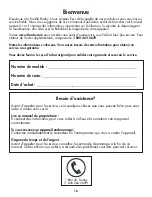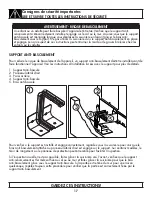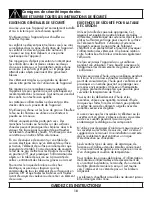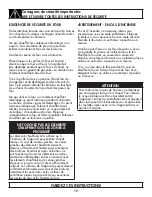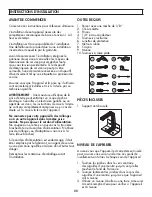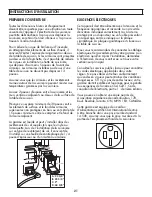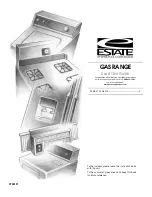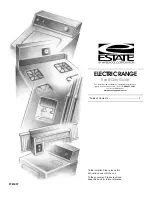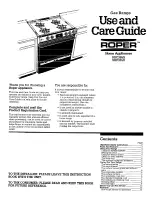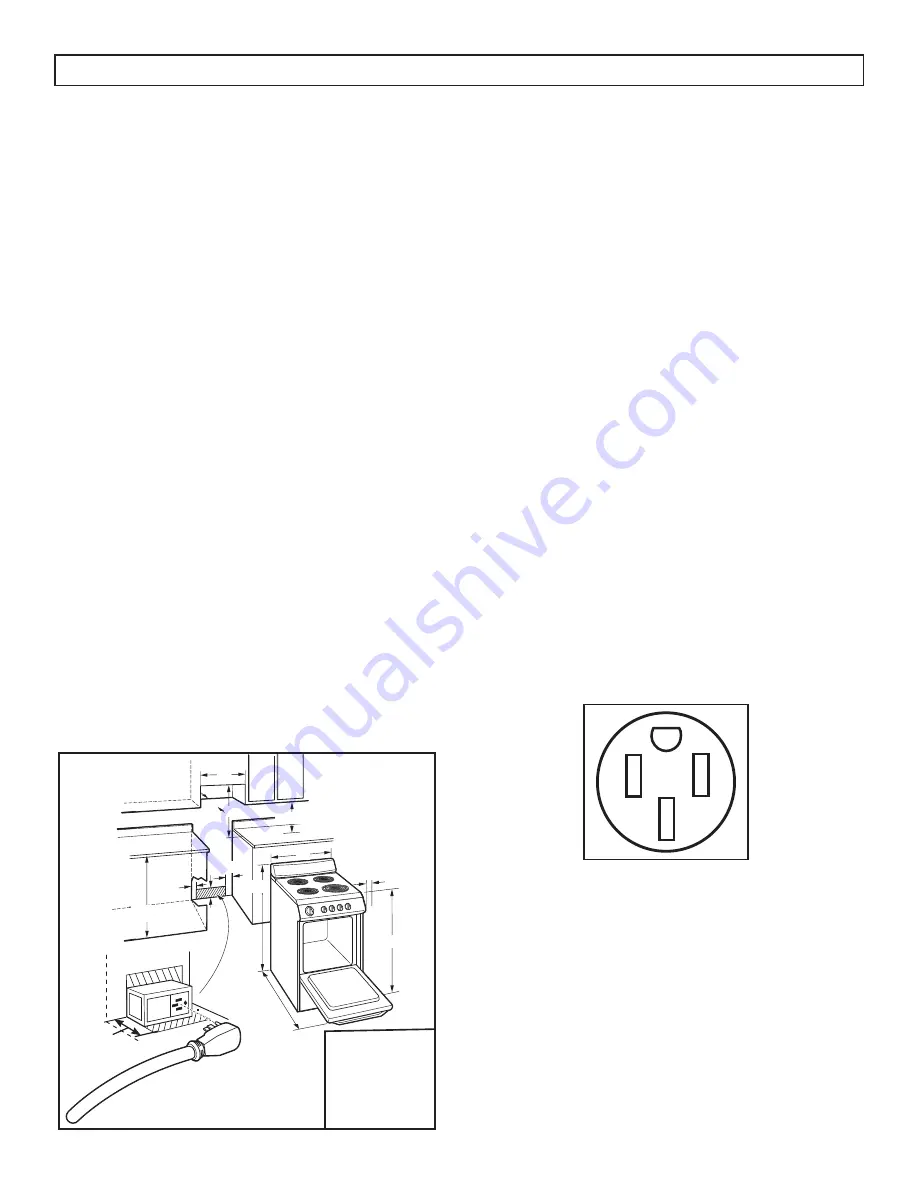
PREPARE THE OPENING
All rough-in and spacing dimensions must be met
for safe use of the appliance. Electricity to the range
can be disconnected at the outlet without moving the
range by removing the lower drawer if the outlet is
in the preferred location.
To reduce the risk of burns or fi re when reaching
over hot surface elements, cabinet storage space
above the cooktop should be avoided. If cabinetry
is present above the range, risk can be reduced
by installing a range hood that sticks out at least 5
inches beyond the front of the cabinets. Cabinets
installed above a cook top must be no deeper than
13 inches.
Make sure the cabinets and wall coverings around
the range can withstand temperatures generated by
the range.
Allow 2 inches of space from the range to the
adjacent vertical walls above the cooktop surface.
Allow 30 inches minimum clearance between the
surface elements and the bottom of unprotected
wood or metal top cabinets and 15 inches minimum
between the counter top and the adjacent cabinet
bottom.
The range is heavy and can settle into soft fl oor
coverings such as vinyl or carpeting. When
installing the range on this type of fl ooring, it should
be installed on a 1/4 inch thick sheet of plywood or
similar material.
2¼”
36” max.
2”
36” ¾ ± ¼”
15” min.
5” 2½”
41¾”
A
C
B
13”
30” min.
max.
D
A: 23 3/4”
B: 23 3/4”
C: 2”
D: 44 3/8”
INSTALLATION INSTRUCTIONS
6
ELECTRICAL REQUIREMENTS
This appliance must be supplied with the proper
voltage and frequency, and connected to an
individual properly grounded branch circuit,
protected by a circuit breaker or fuse having
amperage as specifi ed on the rating plate. The
rating plate is located under the cooktop.
We recommend you have the electrical wiring and
hookup of your range connected by a qualifi ed
electrician. After installation, have the electrician
show you where your main range disconnect is
located.
Check with your local utilities for electrical codes
which apply in your area. Failure to wire your
oven according to governing codes could result
in a hazardous condition. If there are no local
codes, your range must be wired and fused to
meet the requirements of the CSA Standard C22.1,
Canadian Electrical Code, Part 1 - latest edition.
You can get a copy from: Canadian Standards
Association, 178 Rexdale Blvd., Toronto, ON, M9W
1R3, CANADA.
This range is equipped with a CSA International
Certifi ed Power Cord intended to be plugged into
a standard 14-50R wall receptacle. Be sure the
wall receptacle is within reach of the range’s fi nal
location.

















